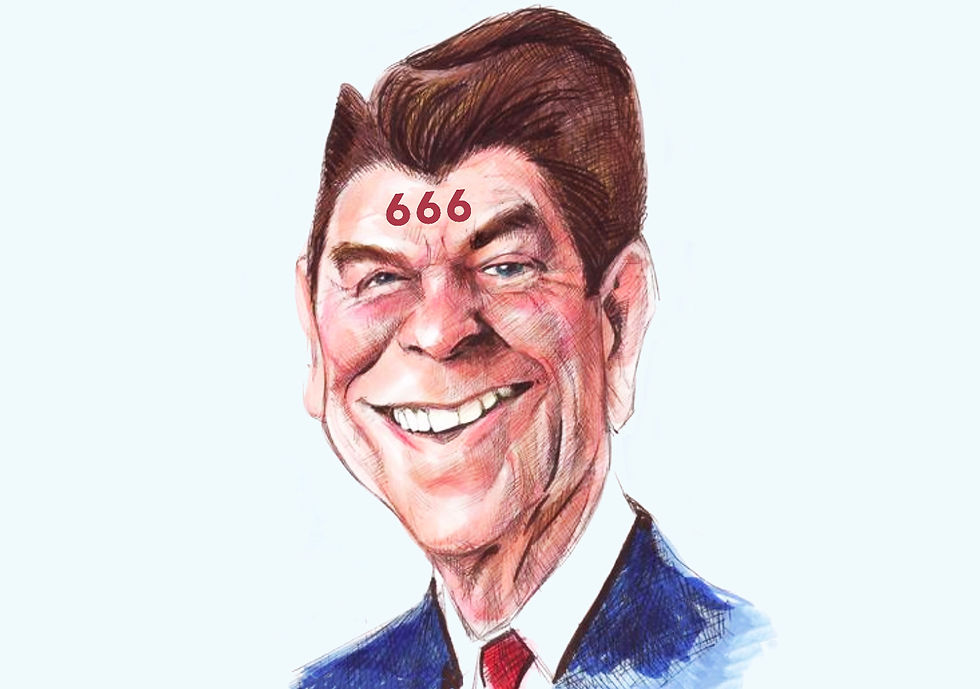
A few years ago, my wife and I took our daughter to the Mayo Clinic in Rochester, Minnesota, for medical testing. While there, I saw former Secretary of State Henry Kissinger (1923-2023) being wheeled around.
Seeing him reminded me of how, in the late 70s and early 80s, many Christians believed he was the Antichrist. As a foreign-born official leading talks with the Soviet Union, Kissinger made Americans nervous. They thought he was brokering a false peace agreement and ushering in the end of the world.
However, seeing Kissinger in the twilight of his years makes that assertion seem absurd. He was a politician and geopolitical consultant, not a demonically inspired end-time monarch. Yet, when it comes to cataclysmic anxieties, facts seldom matter. People often rely on feelings.
Throughout my lifetime, families were anxious about the Antichrist. I remember paperbacks with scary depictions of the post-apocalyptic world and an ominous Jack Chick tract with the mark of the beast on the cover. One elderly woman in my Pentecostal church kept saying, “Oh, the end is nigh. Oh, the end is nigh.”
After President Ronald Reagan (1911-2004) was shot March 30, 1981, churchgoers asked whether he was the prophesied evil figure of the “end-times.” Some were concerned that John Hinckley Jr.’s assassination attempt fulfilled part of John’s prophetic vision:
I saw that one of the heads of the beast seemed wounded beyond recovery—but the fatal wound was healed! The whole world marveled at this miracle and gave allegiance to the beast (Revelation 13:3 NLT).
At my Pentecostal Church, I remember congregants reflecting on the attack and speculating about the next event on the “prophetic time clock.” It didn’t help that Reagan’s first, middle, and last name each had six letters—Ronald [6] Wilson [6] Reagan [6]—seemingly asserting the number 666.
During this same era, Christians also speculated about the destinies of Soviet leader Mikhail Gorbachev (1931-) or Muammar Gaddafi (1942-2011) of Libya. Some hypothesized that each of these men was the Antichrist. Less than a decade later, Evangelicals insisted that the “Man of Sin” was Saddam Hussein (1937-2006) of Iraq—the land once known as Babylon.
I never knew what to think when I heard this. It certainly made me feel unsettled. It always seemed like some terrible geopolitical event was going to plunge Americans into chaos and destruction.
Although the economy was growing and the lives of most families were improving, many churchgoers were expecting a monster to be revealed. They were expecting the fly in the ointment. Honestly, believers often find precisely what they’re looking for. Those with a cataclysmic worldview see the earth through such dreadful lenses that they have a hard time seeing anything good. For them, every day is just one step away from heartache and ruin. They believe evil is about to rush in and catch us all unaware.
This was the mindset I grew up around. Every churchgoer I knew expected everything to fall apart. There was no need to build or invest; time was running out. Many preachers said, “The Antichrist is already alive and working, and the Day of Judgment is near.” It is easy to get caught up in the paranoia when it keeps coming at you.
I think it’s time to tell some new stories and see things differently. Maybe we could find a way to lean into the hope of Christ?
_______________________________
Salem Kirban, Kissinger: Man of Peace? (Huntington Valley, Pennsylvania: Salem Kirban, 1974).
Jack Chick, The Beast (Ontario, California: Jack Chick Publications, 1966, 1988). Chick’s “religious cartoons, known as Chick tracts, became known worldwide as tools of religious salvation.” To some, his “tracts are American folk art . . . titillating and somewhat dangerous.” Anita Gates, “Jack T. Chick, Cartoonist Whose Tracts Preached Salvation, Dies at 92,” New York Times (October 26, 2016).
The term “prophetic time clock” was used by televangelists and authors to describe how close America was coming to “midnight,” or the end of days. As the clock advanced, saints could expect the soon coming of the Lord. For example, Salem Kirban said, “Based on these observations, it is my considered opinion, that the time clock is now at 11:59. When is that Midnight hour . . . the hour of the Rapture? I do not know!” Salem Kirban, Countdown to Rapture (Huntington Valley, Pennsylvania: Salem Kirban, 1977), 188.
The Apostle Paul referred to a “Man of Sin” in 2 Thessalonians 2:3-10. Some speculate that this was referring to the Beast of Revelation as well. For more on this topic, read Kenneth L. Gentry, Perilous Times: A Study in Eschatological Evil (Chesnee, South Carolina: Victorious Hope Publishing, 2012).
For more on apocalypticism’s influence on classical Pentecostalism, see David R. Johnson, “The Mark of the Beast, Reception History, and Early Pentecostal Literature,” Journal of Pentecostal Theology 25.2 (2016): 184-202.
Various, “Is the Second Coming Near?,” CBS News (December 9, 1999).
Comments